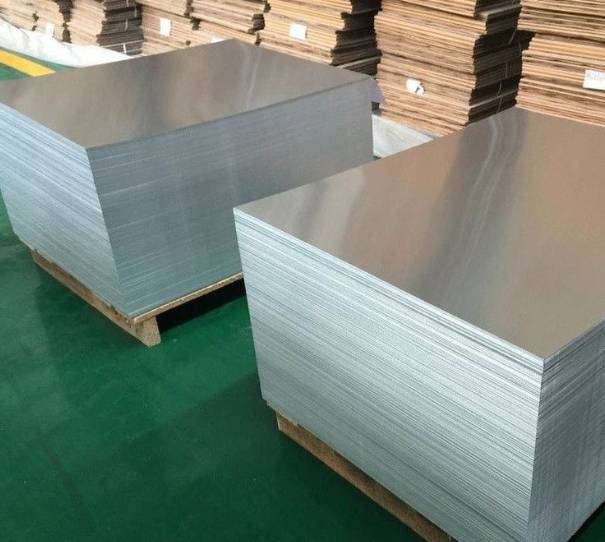When selecting materials for structural applications, the choice of alloy plays a pivotal role in determining the performance and longevity of the final product. Among the myriad of aluminum alloys available, the 6061 aluminum plate stands out due to its exceptional strength-to-weight ratio, versatility, and durability. This article delves into the factors that contribute to the superior strength of 6061 aluminum plates, providing insights into its composition, mechanical properties, and practical applications.

Understanding 6061 Aluminum Plate
What is 6061 Aluminum?
6061 aluminum is a precipitation-hardened aluminum alloy primarily composed of magnesium and silicon. This alloy is renowned for its excellent mechanical properties, including high strength, good weldability, and resistance to corrosion. It is commonly used in various industries, including aerospace, automotive, and marine applications.
Composition and Heat Treatments
The standard composition of 6061 aluminum includes:
-
Magnesium (Mg): 0.8–1.2%
-
Silicon (Si): 0.4–0.8%
-
Copper (Cu): 0.15–0.4%
-
Chromium (Cr): 0.04–0.35%
-
Aluminum (Al): Balance
The alloy undergoes different heat treatments to achieve specific mechanical properties. The most common tempers are:
-
6061-O: Annealed (softened)
-
6061-T4: Solution heat-treated and naturally aged
-
6061-T6: Solution heat-treated and artificially aged
Among these, 6061-T6 offers the highest strength.
Mechanical Properties of 6061 Aluminum Plate
Strength Characteristics
The strength of 6061 aluminum varies with its temper:
-
6061-O: Ultimate tensile strength of 18,000 psi (124 MPa) and yield strength of 8,000 psi (55 MPa).
-
6061-T4: Ultimate tensile strength of 35,000 psi (241 MPa) and yield strength of 21,000 psi (145 MPa).
-
6061-T6: Ultimate tensile strength of 45,000 psi (310 MPa) and yield strength of 40,000 psi (276 MPa).
These values indicate that 6061-T6 aluminum is significantly stronger than its O and T4 counterparts, making it suitable for demanding structural applications.
Other Mechanical Properties
-
Elongation: Approximately 12% in 2 inches for 6061-T6, indicating good ductility.
-
Brinell Hardness: Around 95 HB, reflecting moderate hardness.
-
Modulus of Elasticity: Approximately 68.9 GPa, contributing to its stiffness.
Factors Contributing to Superior Strength
Alloying Elements
The primary alloying elements in 6061 aluminum are magnesium and silicon. Magnesium enhances strength and hardness, while silicon improves corrosion resistance and reduces the alloy’s susceptibility to stress corrosion cracking.
Heat Treatment Process
The heat treatment process significantly influences the mechanical properties of 6061 aluminum. Solution heat treatment dissolves soluble phases, and aging allows precipitates to form, strengthening the material. The T6 temper, involving solution heat treatment followed by artificial aging, results in the highest strength.
Microstructure
The microstructure of 6061 aluminum, characterized by fine precipitates within the aluminum matrix, contributes to its strength. These precipitates hinder dislocation movement, thereby enhancing the material’s resistance to deformation.
Applications Demonstrating Strength
Aerospace Industry
6061 aluminum plates are extensively used in the aerospace sector for components like aircraft wings and fuselages. The alloy’s high strength-to-weight ratio is crucial for ensuring structural integrity while minimizing weight.
Automotive Sector
In automotive manufacturing, 6061 aluminum is employed in chassis components and body panels. Its strength allows for the production of lightweight vehicles without compromising safety.
Marine Applications
The marine industry utilizes 6061 aluminum for boat hulls and structural components due to its resistance to corrosion and strength, ensuring longevity and durability in harsh marine environments.
Comparison with Other Aluminum Alloys
To better understand the advantages of 6061 aluminum, let’s compare it with another common aluminum alloy, 7075:
| Property | 6061 Aluminum | 7075 Aluminum |
|---|---|---|
| Ultimate Tensile Strength | 45,000 psi (310 MPa) | 83,000 psi (572 MPa) |
| Yield Strength | 40,000 psi (276 MPa) | 73,000 psi (503 MPa) |
| Brinell Hardness | 95 HB | 150 HB |
| Corrosion Resistance | Good | Fair |
| Weldability | Excellent | Poor |
While 7075 aluminum offers higher strength, 6061 aluminum provides a balance of strength, corrosion resistance, and weldability, making it more versatile for various applications.
Conclusion
The superior strength of 6061 aluminum plates is attributed to their unique composition, heat treatment processes, and microstructural characteristics. These factors collectively contribute to its widespread use in industries where strength, durability, and reliability are paramount. Understanding these elements can aid in selecting the appropriate material for specific applications, ensuring optimal performance and longevity.
Practical Checklist for Selecting 6061 Aluminum Plate
-
Determine Strength Requirements: Assess the tensile and yield strength needed for your application.
-
Consider Corrosion Resistance: Evaluate the environmental conditions to ensure adequate corrosion protection.
-
Assess Weldability: Ensure the alloy’s compatibility with your welding processes.
-
Evaluate Machinability: Consider the ease of machining based on the alloy’s hardness.
-
Check Availability: Confirm the availability of the desired temper and thickness for your project.
By following this checklist, you can make an informed decision when selecting 6061 aluminum plates for your specific needs.